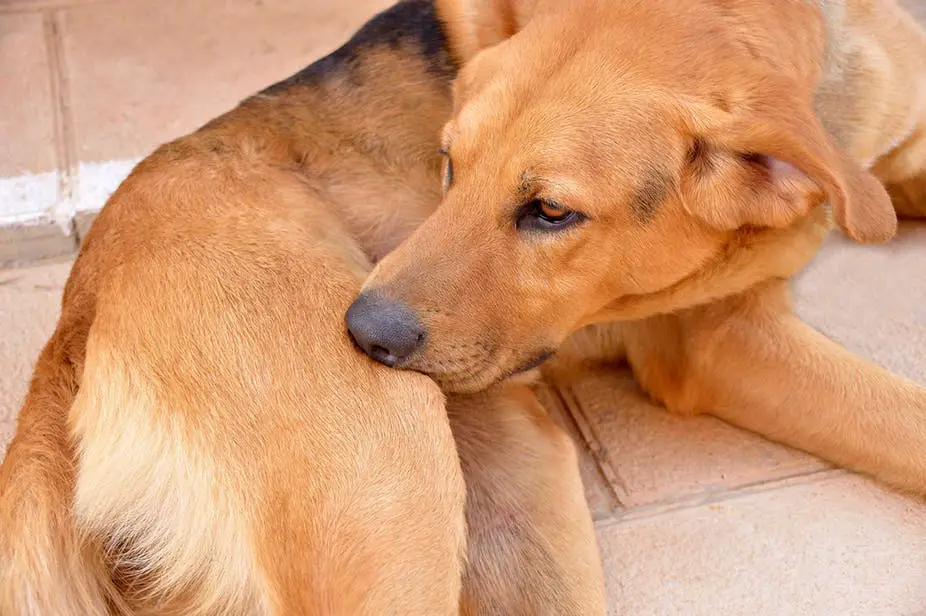My Dog Is Always Scratching But Doesn’t Have Fleas – What Should I Do?
When you see a dog itch, you automatically think it has fleas; however, this might not be the case. You keep your dog clean and take them to the groomers; thus, you are sure that your dog should not be itching continuously. Apart from fleas and mites, other factors might be causing your dog to itch. This article covers some of the common causes of itchy skin in dogs and possible remedies to keep the itching at bay.
Common Causes
Many people assume that an itchy dog is a dirty dog, and this misconception can lead dog owners to overlook other reasons causing the itching. If you only treat the skin and neglect the issues causing the skin to itch, then expect your dog to itch frequently. Some typical causes for itchy skin in dogs are:
- Food Sensitivity
Is your dog sensitive to some types of food? Dogs can be allergic to some components in their food that will cause inflammation and cause the skin to itch. You may realize that your dog starts itching when you change the diet, and this means that there is something in the food that doesn’t agree with the dog’s body.
Doctors recommend that you carry out a RAST test to determine the allergens that your dog reacts to. When you discover the responsible allergens, work out a diet plan with the vet that ensures your dog has a balanced diet even without the foods they are allergic to.
- Dry Skin
Sometimes dogs suffer from dry skin; it may be a hydration issue, or the weather is causing the skin to dry out. During winter or on sunny days, you find that the skin gets exposed to harsh conditions that deprive it of normal moisture levels. You can try and use coconut oil to skin the dog’s skin moisturized.
- Stress/Anxiety
When dogs are stressed or anxious, they have to redirect that energy somewhere. You find that some dogs itch and lick themselves to get rid of the edge. This constant scratching or licking can irritate the skin and make the situation worse. Regular exercise and attention from the owner are good ways to lower the dog’s stress or anxiety levels.
- Hormonal Imbalance
If your dog does not have food sensitivities or naturally suffers from dry skin, hormonal imbalance might be the culprit. Low thyroid hormones, together with high production of cortisol, skin issues are likely to surface. While you are at the vet, you can have them check if there are thyroid issues that may contribute to the itchy skin and balding patches.
- Poor Nutrition
A dog on a diet that lacks fatty acids, zinc, copper, and other nutrients will manifest skin issues. The skin starts to deteriorate slowly before the continuous itching takes over. If your dog has a dull coat and keeps itching, try to give supplements that are not usually in the diet. If the coat improves its luster and the dog itches less, then the issue was the unbalanced diet.
- Genetic Issues
Some dogs develop skin issues as they grow older naturally. This is common in some breeds like the Cavalier King Charles Spaniel or golden retrievers with ichthyosis. Hairless dogs such as the Chinese Crested and Xoloitzcuintli are prone to dry skin conditions because they do not have a protective coat. Genetic-related skin conditions will persist, but they are manageable to lower the dog’s discomfort.
- Foreign object
If your dog is just itching in one section, investigate if there is a thorn or a splinter embedded in that section, especially for hairless dogs. It is easy for hairless dogs to have things snag at their skin while outdoors.
Possible Treatments
Before you settle on any treatment, you should consult with the vet to understand the actual reason behind the itchiness; otherwise, you might end up with an itchy dog repeatedly.
- Medication
If food sensitivities cause the dog’s itchy skin, the doctor will prescribe medicine to reduce the allergy’s effects. Some doctors will issue corticosteroids or antihistamines, but they should not be used continuously for long periods because they have side effects. The doctor will prescribe additional antibiotics if the skin is showing signs of an infection.
- Reduce Allergens
When you go to the doctor and conduct the RAST test, you will have a better understanding of what allergens affect your dog. While we cannot remove all the allergens in the environment, we can reduce the dog’s exposure to them.
Introduce air filters in your home to reduce air allergens as you remove food that they are sensitive to from the diet. Vacuuming with HEPA filters is excellent for keeping your home free of airborne allergens.
If your dog is sensitive to pollen, wipe their paws and entire body to reduce the pollen attached to them while they were outside. Pollen also sticks to clothes, so the minute you get to the house, change your clothes to interact with the dog without triggering their allergies.
- Moisturizing products
There are several products in the market designed to deal with dry skin conditions in dogs. Moisturizing shampoos are convenient because you can moisturize the skin while keeping the animal clean. Do some research online or ask your vet for reliable products in the market that help with dandruff and dry skin.
- Food Supplements
A balanced diet will do a lot in terms of keeping the canine healthy. Kibble is an easy way to feed dogs, but kibble does not always have all the nutrients your dog needs. Mix in dry and wet food to see that the dog enjoys the best of both worlds. Remember that omega 3, omega 6, Vitamin A, Vitamin E, copper, zinc, and selenium are crucial for healthy fur and skin.
- Protect affected areas
Whether due to anxiety or boredom, dogs may overlick one area, which results in a bald spot with a wound. Keep the dog from making the situation worse by using a cone or a muzzle. Once the area heals, you can release the dog from its cone.
Conclusion
Itching in dogs is relatively normal, but insistent itching needs further probing. Contact your vet for further clarification if you are unsure what the cause is. The good news is that itchy skin is manageable; within a short while, your dog should be back to normal.





